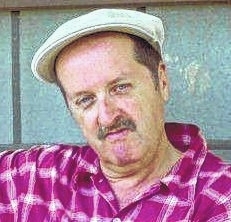No records have ever been found that show anyone settling in what is now Chesterfield County until about 1730. Up to that time, Chesterfield was part of a large section of land that was called Craven County that was created in 1682. In 1731, the British government ordered that the township of Queensborough be marked out. An assortment of tempting bounties was offered to induce rapid settlement.
The bounties soon attracted Welsh Baptists from Delaware. The first of these Baptists came into Chesterfield County in 1736. The bounties were continued until 1743. By then, the number of settlers had greatly increased, most of them still being Welsh. Soon, other settlers of English, Scottish and Irish descent began to come into the area.
Chesterfield, with an elevation of 290 feet, is located on a long ridge, running in a generally easterly-westerly direction. This ridge for years was known as “Healthy Ridge.” Chesterfield was never affected by any serious epidemics of typhoid fever or smallpox. Many people believed that this was true because of Chesterfield being located on “Healthy Ridge.” Chesterfield, in its early days, even had its share of witchcraft. Probably the last witch trial in America was held in Lancaster, South Carolina in 1813, before Judge David Johnson, who later became governor.
Barbara Powers, an old woman of Chesterfield, was accused of maltreating by diabolical arts a girl from Lancaster. The girl testified, “being fatigued one evening … I lay down to rest; Barbara Powers … choked me with great violence. After this, she raised me up, converted me into a horse and rode me to Lancaster…. At Lancaster, she went through the keyhole into several shops, brought our goods of great value, loaded me with them and rode me into Chesterfield along with her stolen goods… Then she rode me to Cheraw … and then rode me back to her residence.”
“Mill’s Atlas,” published in 1825, shows the “Stage and Main Post Road” passing only a few miles south of Chesterfield. This road, built about two decades earlier, provided a north-south road for stagecoaches running from New York to New Orleans. Later, the telegraph lines of the Postal Telegraph Company followed its route. Thus, it came to be known as the “Old Wire Road.”
By 1826, Chesterfield had become a busy village having about 100 inhabitants, 12 houses and two stores. The year 1845 brought a memorable famine to this area. Almost nothing was raised on the farms. The farmers did not raise nearly enough to feed the people and the stock, so, the residents sent everything that could walk or crawl to Virginia, where there was plenty.
Chesterfield had become industrial by 1845. Local industry supplied almost all of the material needs of her citizens. Chesterfield could proudly boast of having her own iron foundry, where farm implements and irons, water wheels, and so forth were made out of the molten iron; fur hat factory; blacksmith shop; cabinet and furniture shop; harness and shoe shop, where all the shoes and harnesses for the town were made; wheelwright shop, that made anything that ran on wheels; and flour, grits, and sawmill.
During the 1850’s the difference gap between the North and South grew wider and wider. The two geographical sections had very little in common. Neither, I think, actually understood the other. The word secession was spoken in whispers among the people. Finally, action was taken.
During the Reconstruction Period a new courthouse was built. Many of the houses were built back, but the Southern way of life had been completely ruined. Nothing would ever be the same. With the coming of the 20th century came the new and modern inventions. The first automobile in Chesterfield was owned by Dr. W. J. Perry, who, in his chain-driven Reo, got many stares from the curious and amazed bystanders.
Later, electric lights came along. Chesterfield had its own power plant that furnished electricity for the town. The electricity came on only at dusk and was turned off before midnight. It was then turned on early in the morning so that the townspeople might see to cook breakfast. On Thursday afternoons, the electricity was turned on so that women could make use of their new-fangled electric irons.
A house with quite a history is the West Main Street residence of Mr. and Mrs. David Jackson. The house was built of native lumber in 1834 to serve as early Chesterfield’s Methodist Church. The Methodist congregation used the house until 1865.
During the Reconstruction Period, immediately following the War Between the States, the need for a place to carry on the county’s business and store the county’s records arose. After much careful planning, the “Old Methodist Church” was chosen to serve as a temporary courthouse. The building served as courthouse until 1885.
Steve Bailey is employed with the Anson County Historical Society and has specialized in local African-American family history for 20 years.

